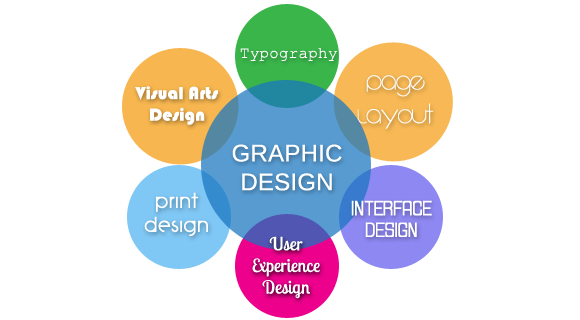Graphic design is a dynamic field that encompasses a diverse range of creative disciplines, each serving a unique purpose in visual communication. From eye-catching advertisements to user-friendly websites, graphic design plays a pivotal role in shaping our visual experiences. Let’s delve into the four primary types of graphic design, each contributing its distinct flair to the vibrant tapestry of visual communication.
Visual Identity Graphic Design: Making a Lasting Impression
Overview:
- Purpose: Establishing and reinforcing brand identity.
- Key Elements: Logo design, color schemes, typography, and brand guidelines.
Role:
- Visual identity graphic design focuses on crafting a cohesive and memorable visual representation for a brand. It involves creating logos that encapsulate the essence of a business, selecting color palettes that evoke specific emotions, and defining typography to maintain consistency across various brand materials.
Examples:
- Recognizable logos like the Nike swoosh, Apple’s iconic apple, and the McDonald’s golden arches are prime examples of visual identity graphic design.
Marketing & Advertising Graphic Design: Capturing Attention
Overview:
- Purpose: Promoting products, services, or ideas through visual communication.
- Key Elements: Posters, banners, brochures, digital ads, and social media graphics.
Role:
- Marketing and advertising graphic design aims to create visually compelling materials that capture the audience’s attention. This includes designing promotional materials for print and digital platforms, fostering brand awareness, and conveying messages that resonate with the target audience.
Examples:
- Print advertisements, social media graphics, and digital banners promoting products, events, or services fall under the purview of marketing and advertising graphic design.
User Interface (UI) Graphic Design: Enhancing User Experience
Overview:
- Purpose: Enhancing the visual appeal and usability of digital interfaces.
- Key Elements: Web design, app design, interactive elements, and user flow.
Role:
- UI graphic design focuses on creating visually appealing and user-friendly digital interfaces. This involves designing layouts, selecting color schemes, and incorporating interactive elements to optimize the overall user experience. UI designers collaborate closely with UX (User Experience) designers to ensure seamless and intuitive interactions.
Examples:
- Website interfaces, mobile app designs, and the visual elements of software applications exemplify the impact of UI graphic design on user interactions.
Publication Graphic Design: Bringing Content to Life
Overview:
- Purpose: Enhancing the visual presentation of printed or digital publications.
- Key Elements: Book covers, magazine layouts, editorial design, and digital publications.
Role:
- Publication graphic design involves bringing written content to life through visually engaging layouts and designs. This includes selecting fonts, arranging text and images, and creating an overall aesthetic that complements the publication’s theme. Whether it’s a book cover or a digital magazine layout, publication designers strive to captivate readers visually.
Examples:
- Magazine layouts, book covers, and digital publications showcase the creative prowess of publication graphic design in presenting content in an appealing and accessible manner.
Conclusion: The Artistry of Graphic Design Unveiled
Each type of graphic design contributes a unique brushstroke to the canvas of visual communication. Whether it’s establishing a brand’s identity, promoting products through compelling visuals, crafting user-friendly digital interfaces, or bringing written content to life, graphic designers play a crucial role in shaping the way we perceive and interact with the world. The versatility and creativity embedded in these four types of graphic design exemplify the dynamic nature of this ever-evolving field.

